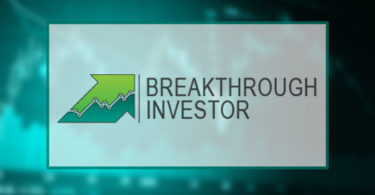Key Points
- The global modular-home market is projected to grow from $82.3 billion in 2020 to $108.8 billion by 2025.
- With new technology, such as 3D printing and robotics, it's making sense to build mass-produced homes.
- At a fraction of the cost of site-built homes, Modular homes can help ease the affordability crisis, allowing more Americans to buy homes.
Modular homes have a bad reputation with some people who think they're inferior to traditionally built, or site-built, homes. One reason is many people confuse modular homes with mobile homes, dumping them together as lower-tier housing options. While modular homes aren't typically as costly as traditionally built homes — largely because of the construction method — they aren't mobile homes either.
Modular homes, just like site-built homes, sit on a foundation and not on a chassis as mobile (manufactured) homes do. Modular homes are constructed in factories and are then brought to homesites. They're a better product than modular homes of the past, as many manufacturers are now using 3D printing and robotics to build them.
The good news for investors is that these new modular homes are not mainstream, at least not yet. The global modular-home market is projected to grow from $82.3 billion in 2020 to $108.8 billion by 2025, reports MarketsandMarkets. If you believe this industry has growth potential, getting in early is usually a good time to invest.
I'm considering pivoting my own investment strategy from buying move-in-ready single-family homes as rental properties to buying land and building modular. I successfully rode the wave (in the Atlanta suburban market), and now that housing prices are so inflated, I'm seriously considering this pivot.
[Exclusive: Daymond John, “The People's Shark,” reveals where he's investing]
Mass production, automation, robotics, and 3D
With new technology, such as 3D printing and robotics, it's making sense to build mass-produced homes. Modular homes are built in factories and brought to housing sites. They cost, on average, 10% to 20% less than site-built homes, but the savings could be far greater than that — Forbes cites modular homes as costing a third of the price of a traditional home. As potential homebuyers face rising home prices and insufficient housing supply, modular homes could be a good investment opportunity for both homeowners and investors. These homes have the potential to solve the supply crisis and provide affordable housing.
With the high cost of housing these days, there's really no good reason that the default strategy is still to build homes individually. Modular homes could provide a good option for folks having a hard time buying in this market.
The benefit
The main reason to buy a modular home is to save money. Run the numbers to determine whether this is the case for you. The good news is the quality of these homes appears to be good. Modular home factories must meet International Residential Code requirements for quality and safety. HomeLight reports that 90% of people who live in a prefabricated home are satisfied with the product.
The downside
Most people who purchase a modular home today buy a new-build, not a resale. There are resales out there, but when you're house hunting, you generally can't search for “modular” homes.
Ordering a modular home from a manufacturer means doing a lot of legwork, similar to having a custom home built. You'd need to buy land and then prepare the land, which includes leveling the ground, clearing any obstructions like trees, and setting the foundation. (There are opportunities to buy land, typically near housing developments, that are ready to be developed.) You would also be responsible for electrical and plumbing. The whole process from buying the land to completing the home can take four to 10 months or more.
[“The People's Shark” is Helping Everyday Americans Discover the Next Huge Startup]
Check zoning
Some local governments ban modular homes. So you'd need to check local zoning laws to determine whether you can put a modular home on the land you're considering. If there are no restrictions, you can buy a single lot or acreage, which you could develop more than one modular home on. Note that if there are zoning restrictions, consider getting involved in your local community to challenge them.
Affordable housing is key to keeping our American dream
It might be a cliche to refer to the American dream of owning a home, but that doesn't make the sentiment less true. The alternative is to become a nation of renters, as has been happening, with large institutions buying an increasing number of homes and making them into rental properties.
(Note there are differences between renting from a mom-and-pop landlord and a large institutional investor, usually regarding rent increases and response times to maintenance and repair requests, with the former typically providing a better renter experience.)
Modular homes, by costing a fraction of the cost of site-built homes, can help ease the affordability crisis, allowing more Americans to buy homes.
How to buy one
- Secure financing: Most people secure financing from a lender that offers construction loans that convert into an end loan after the home is built. Or they have cash.
- Find the land/location.
- Search for companies that build modular homes, work with a consultant, and select a floor plan you like.
- Prepare the lot. (Many modular construction companies help direct you.)
- Wait for delivery and the finishing process (drywall, flooring, connecting utilities, adding extras such as a garage, porch, and deck).
- Insure the home.
Investing opportunity
Property ownership is important. It's one of the best ways we have to build wealth. The problem is home prices have skyrocketed post-pandemic. Even if supply catches up with demand, prices might not go down significantly. They rarely do. The good news is that new technologies can produce houses in a cheaper manner, and modular homes are worth considering.
[Daymond John: America’s Comeback Summit – “I’m Investing 100K in This”]


Leave a Comment